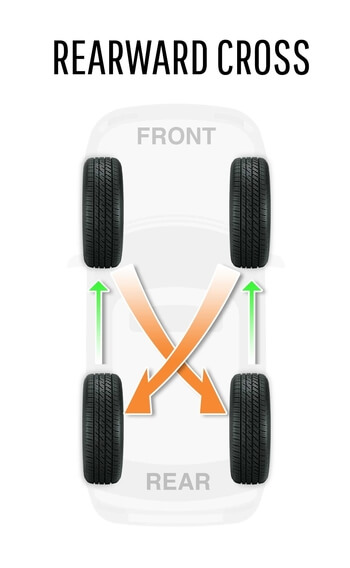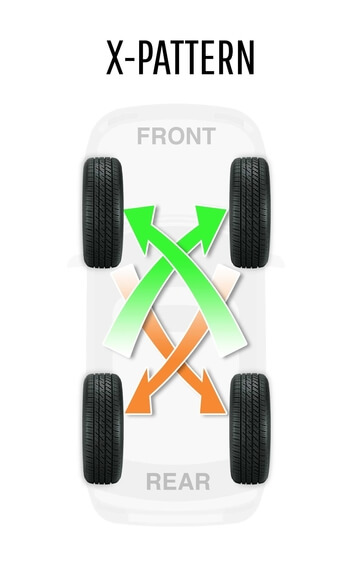Tyre Rotation at Regos Plus
14/08/2019
Tyre rotation, that is routinely repositioning your vehicle’s tyres in specific patterns from front to back or side to side, is an important element of tire upkeep and safety. Additionally, rotating your tyres may also be required to keep your tyres covered under warranty.
WHAT IS TYRE ROTATION?
Tyre rotation means periodically changing the position of each of the tyres on your vehicle. You should rotate your tyres as recommended by the vehicle manufacturer, or every 10,000km. For many of you, that will mean when you get your vehicle’s oil changed.
Regularly rotating your tyres also gives you a good opportunity to visually inspect them for damage, check their air pressure, have them rebalanced if you’re noticing any vibration, and check their tread depth.
WHY IS TYRE ROTATION IMPORTANT?
There are several reasons why tyre rotation is an important element of your standard tyre care. First, by routinely rotating your tyres, wear is spread evenly across all four tyres, and their tread life is maximized. That’s because each specific position on your vehicle requires a different give from each tyre—(for example, tyres on the front of a front-wheel drive vehicle will take a larger proportion of the torque and friction that’s needed for turning, accelerating and braking)—and can lead to more, or less, wear on the tyre. It is especially important to rotate new tyres by 10,000km because deep, fresh tyre tread is more susceptible to uneven wear.
Secondly, even tread wear keeps the tread depth on your tyres uniform, which can help keep traction and handling consistent across all four tyres. This will improve cornering and braking performance and keep your vehicle safer for driving overall.
Finally, if your vehicle has all-wheel-drive, evenly worn tyres lower the stresses on the drivetrain, reducing wear on expensive drive components.
WHAT TYRE ROTATION PATTERN SHOULD I UTILIZE?
The tyre rotation pattern that’s best for your vehicle will depend on the type of tyre you’re using, whether your vehicle is front, rear, all, or four-wheel drive, whether your tyres are directional or non-directional, whether or not your tyres are the same size on the front and rear of your vehicle, and whether you have a full-size spare that can be rotated through as well, unlike a temporary spare.
SAMPLE VISUAL:



FOR TYRES THAT ARE OF UNIFORM SIZE AND NON-DIRECTIONAL:
1. REARWARD CROSS
For vehicles that are 4-wheel, all-wheel, or rear-wheel drive, the rearward cross pattern is recommended. Rear tyres are moved to the forward axle and kept on the same side of the vehicle while the front tyres are moved to opposite sides of the rear axle.
2. X-PATTERN
Recommended for front-wheel drive vehicles such as light-weight trucks and sedans, all tyres are moved diagonally, meaning tyres are switched from one axle to the opposite as well as being repositioned from one side to the other.
3. FORWARD CROSS
This is the most common pattern for front-wheel drive vehicles. The front axle tyres are moved directly back while the rear tyres are moved up diagonally to the opposite side of the front axle.
Call Regos Plus today to book in for your rotate and balance today. (02) 6862 2811.
< Back to news
